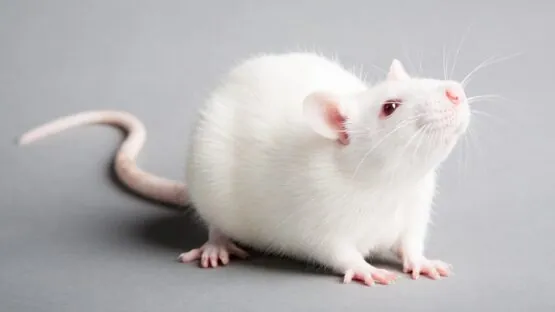Japanese researchers publishing in Aging have described how improving the AMPK metabolic pathway improves outcomes in a rat model of stroke.
Targeting metabolism directly
This paper begins with a look back at previous research on the focus of this study, 5′-adenosine monophosphate-activated protein kinase (AMPK). This signaling molecule is described here as ‘evolutionarily conserved’, meaning that it fulfills the same function across a wide range of distantly related species. It regulates, and is regulated by, multiple aspects of metabolism and physiology. This molecule has been reported to be responsible for metformin’s effects on diabetes [1] and lowers blood pressure in animal models [2].
AMPK holds particular value in the brain. Dysregulation of AMPK is associated with Alzheimer’s and Parkinson’s diseases [3], and brain aging and AMPK dysregulation appear to be strongly linked [4]. AMPK is linked to the cellular maintenance process of autophagy in brain cells [5], and other research has suggested that it could be a target for stroke treatment [6].
While metformin and exercise have been reported to affect AMPK, these researchers instead chose 1,5-anhydro-D-fructose (1,5-AF), which is naturally formed by decomposition in the gut [7]. These researchers have previously reported that 1,5-AF helps mitochondria to form in neurons, providing a protective effect [8]. However, that study was done in cells, not living animals, and so for this study, these researchers have moved on to rodents.
Three models of aging show positive results
As their name suggests, stroke-prone spontaneously hypertensive rats (SHRSPs) have high blood pressure, nearly double that of ordinary rats, and are often used to develop therapies for stroke [9]. Another model used in this study is a senescence-prone mouse model, SAMP8, which is uniquely prone to brain aging [10]. The researchers also used a conventional model of acute ischemic stroke (AIS), which uses unmodified rats subjected to a stroke-inducing procedure.
In the AIS model, 1,5-AF administration drastically reduced the extent of the damage caused by stroke. Infarcts were far smaller, neurology was significantly less impacted, and mortality rate was considerably lower. 1,5-AF was found, as expected, to significantly upregulate a pathway related to AMPK. It was also found to reduce TNF-α, which encourages inflammation.
These findings continued to the SHRSP model. Rats of this breed that were given water high in salt had reduced blood pressure when also given 1,5-AF, and their mortality rate was substantially lower. AMPK was upregulated, and TNF-α was downregulated, in these animals as well. The 1,5-AF group also had additional muscle mass.
In the SAMP8 mice, the findings were positive although more spotty and less significant. While the total locomotion distance seemed unaffected, frailty in the mice given 1,5-AF was somewhat delayed from the norm of this breed, and the 1,5-AF mice ran slightly faster. The Morris water maze test did not return positive results, but the 1,5-AF group had better object recognition. Although the AMPK pathway was affected, TNF-α was not significantly affected in this mouse model.
A future for treatments
From the totality of these results, the researchers conclude that 1,5-AF causes neurovascular improvement in a way that protects against stroke. However, all of these are animal models, two of which are specifically engineered for the purpose. Further trials, particularly human clinical trials, will be required to determine if 1,5-AF or other AMPK-related therapies are valuable for preventing or treating strokes in people.
Literature
[1] Musi, N. (2006). AMP-activated protein kinase and type 2 diabetes. Current Medicinal Chemistry, 13(5), 583-589.
[2] Ford, R. J., Teschke, S. R., Reid, E. B., Durham, K. K., Kroetsch, J. T., & Rush, J. W. (2012). AMP-activated protein kinase activator AICAR acutely lowers blood pressure and relaxes isolated resistance arteries of hypertensive rats. Journal of hypertension, 30(4), 725-733.
[3] Liu, Y. J., & Chern, Y. (2015). AMPK-mediated regulation of neuronal metabolism and function in brain diseases. Journal of neurogenetics, 29(2-3), 50-58.
[4] Mattson, M. P., & Arumugam, T. V. (2018). Hallmarks of brain aging: adaptive and pathological modification by metabolic states. Cell metabolism, 27(6), 1176-1199.
[5] Shi, Q., Cheng, Q., & Chen, C. (2021). The role of autophagy in the pathogenesis of ischemic stroke. Current neuropharmacology, 19(5), 629-640.
[6] Jiang, S., Li, T., Ji, T., Yi, W., Yang, Z., Wang, S., … & Gu, C. (2018). AMPK: potential therapeutic target for ischemic stroke. Theranostics, 8(16), 4535.
[7] Ito, T., Totoki, T., Takada, S., Otsuka, S., & Maruyama, I. (2021). Potential roles of 1, 5-anhydro-d-fructose in modulating gut microbiome in mice. Scientific reports, 11(1), 19648.
[8] Kasamo, Y., Kikuchi, K., Yamakuchi, M., Otsuka, S., Takada, S., Kambe, Y., … & Maruyama, I. (2021). 1, 5-anhydro-D-fructose protects against rotenone-induced neuronal damage in vitro through mitochondrial biogenesis. International journal of molecular sciences, 22(18), 9941.
[9] Yamagata, K. (2020). Astrocytic nutritional dysfunction associated with hypoxia-induced neuronal vulnerability in stroke-prone spontaneously hypertensive rats. Neurochemistry International, 138, 104786.
[10] Sanada, Y., Ikuta, Y., Ding, C., Shinohara, M., Yimiti, D., Ishitobi, H., … & Miyaki, S. (2022). Senescence-accelerated mice prone 8 (SAMP8) in male as a spontaneous osteoarthritis model. Arthritis Research & Therapy, 24(1), 235.




